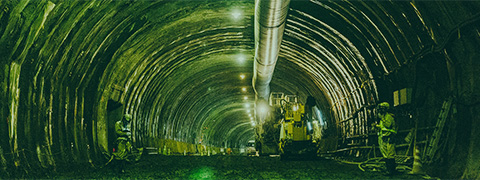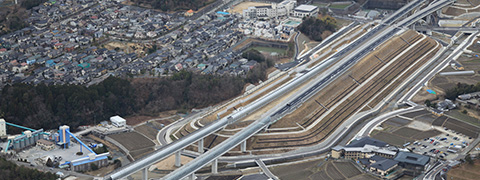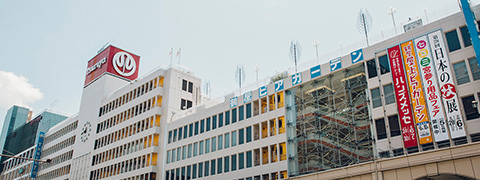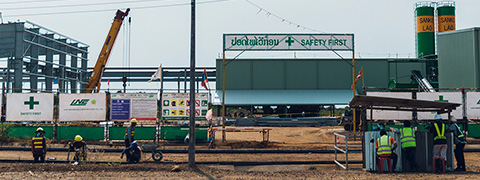
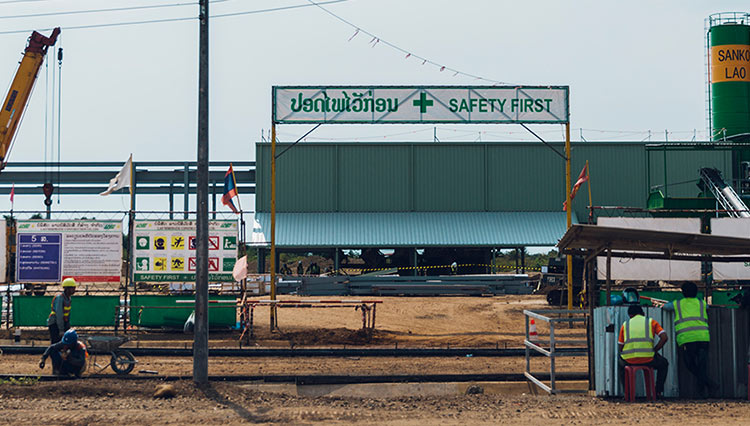
Contributing to the economic development of Laos
Development and operation of the country’s first industrial zone exclusively for Japanese SMEs
In March 2015, Nishimatsu Construction established Lao Nishimatsu Construction Co., Ltd., which is the first joint venture of a Japanese general contractor in Laos. In January 2016, we participated in the establishment of a company developing and operating the Pakse-Japan SME SEZ (industrial zone), a special economic zone for Japanese small- and medium-sized enterprises (SMEs), at Pakse, Champasak Province in southern Laos.
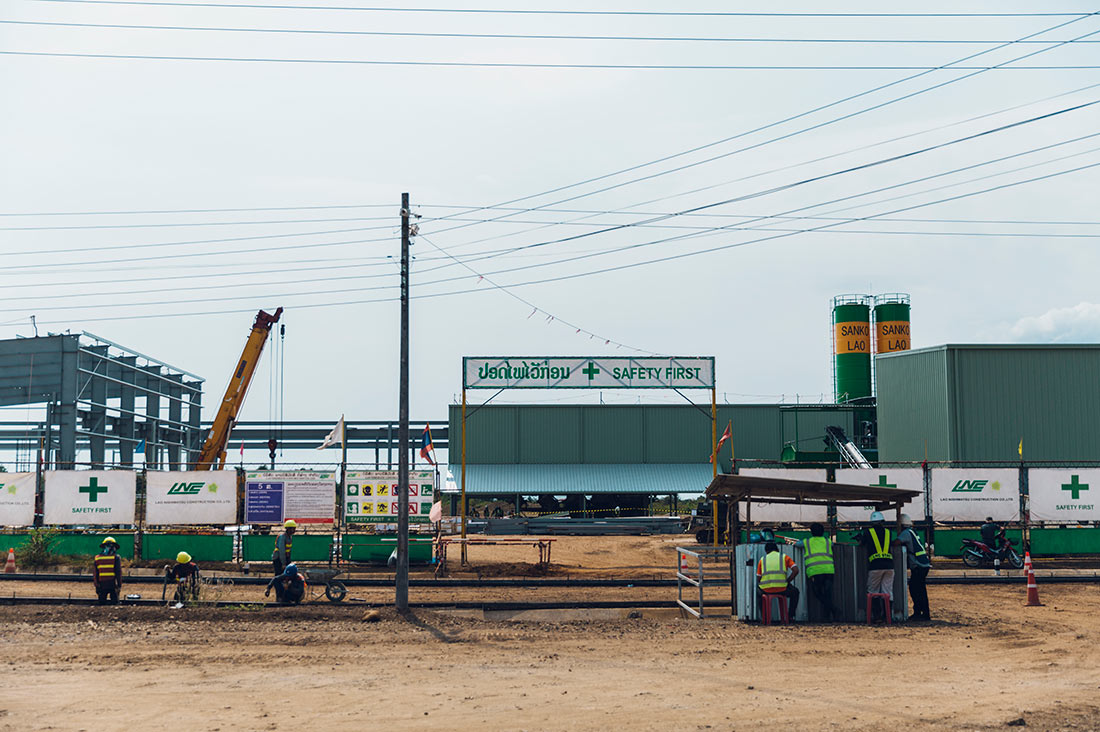
Laos as the last frontier in Southeast Asia
Located on the Indochinese Peninsula, Laos is the only landlocked country in Southeast Asia. The country is almost as wide as Honshu in Japan, with high plateaus and mountainous areas constituting 70% of the nation. It lags behind Southeast Asian countries in terms of industrialization, with 70% of its working population engaged in farming. Designated as one of the Least Developed Countries (LDCs) by the United Nations, Laos has low economic indicators, such as income level. However, people in the country value the time spent with their families and friends and never experience food shortages. Under these conditions, people in Laos lead rich lives.
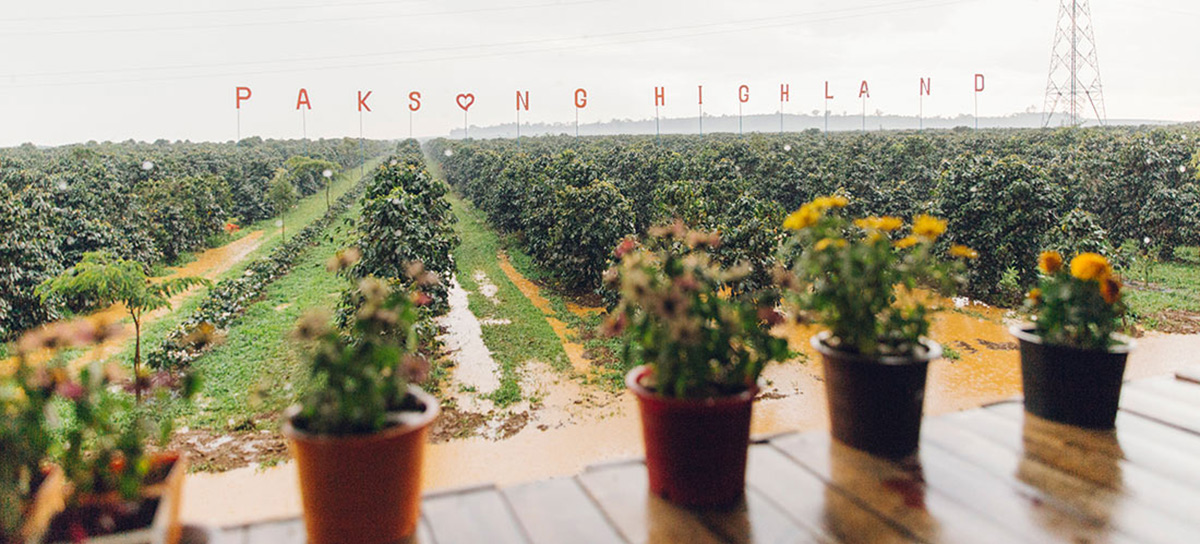
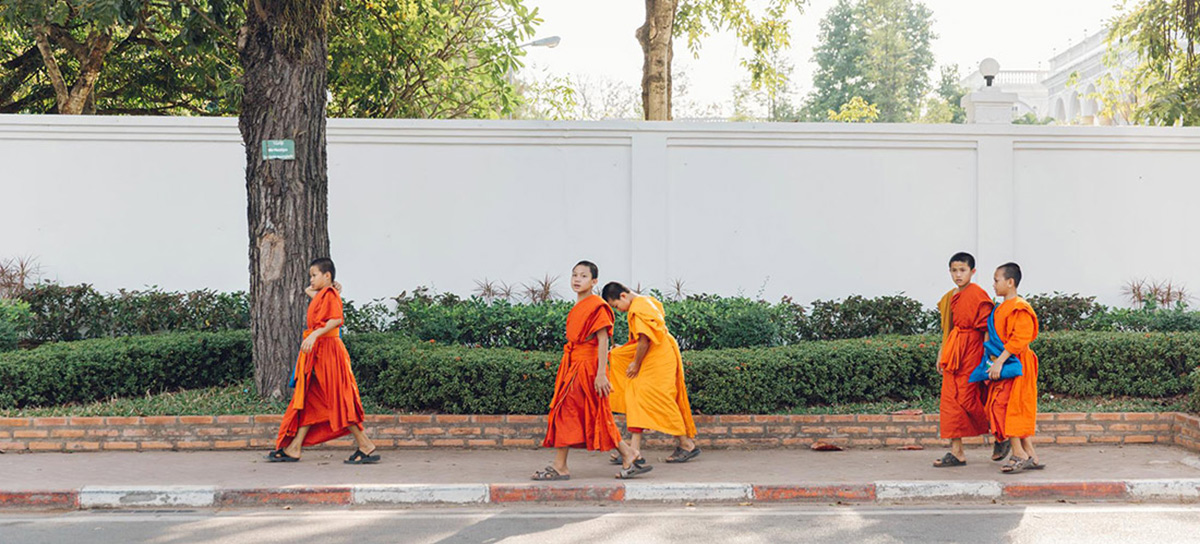

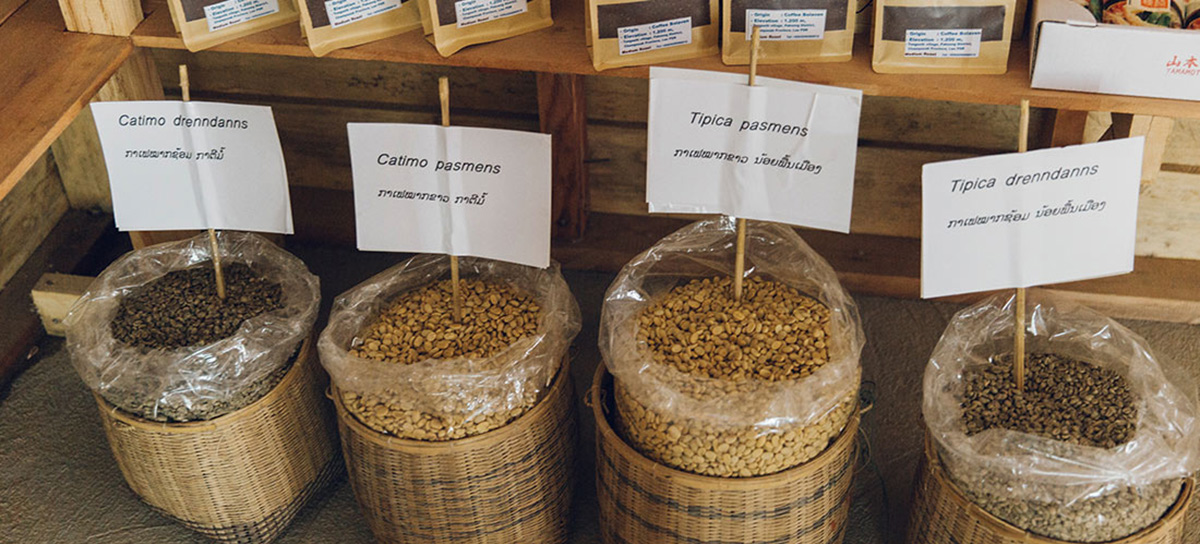
Pakse, where the special economic zone is located, is a southern city in Laos with a population of 100,000. It is near the Bolaven Plateau, which has coffee farms and strawberry farms run by Japanese companies. In 2013, the East-West Economic Corridor was opened to traffic in Savannakhet Province, which is 300 kilometers north of Pakse. Coupled with the opening of National Route 16 linking Pakse and Da Nang, the development of a land route that allows cars leaving Pakse to reach Cambodia in 90 minutes and other developments, Pakse is attracting attention from Japanese companies. An increasing number of companies transfer their bases for detailed work from Thailand to Laos partly because Laotians in general, who are used to farm work and manual labor since childhood are manually dexterous, and partly because labor cost is relatively low in the country. Pakse is not an exception, witnessing the entry of magnetic component manufacturers and wig manufacturers. It is in an area along the Mekong, which is about 20 minutes by car from Pakse and near the location where Japanese companies are, that development of the Pakse-Japan SME SEZ is underway.
What is the Pakse Industrial Zone?
The industrial zone that we are developing is located in the Pakse-Japan SME SEZ, a special economic zone for Japanese small- and medium-sized enterprises that was permitted by the Laotian government in Pakse. The total development area is 195 hectares, which is about 41 times as wide as Tokyo Dome. In August 2017, we completed land development for approx. 13 hectares in the phase-1 development area, which is about 66 hectares, and began to sell land-use rights.
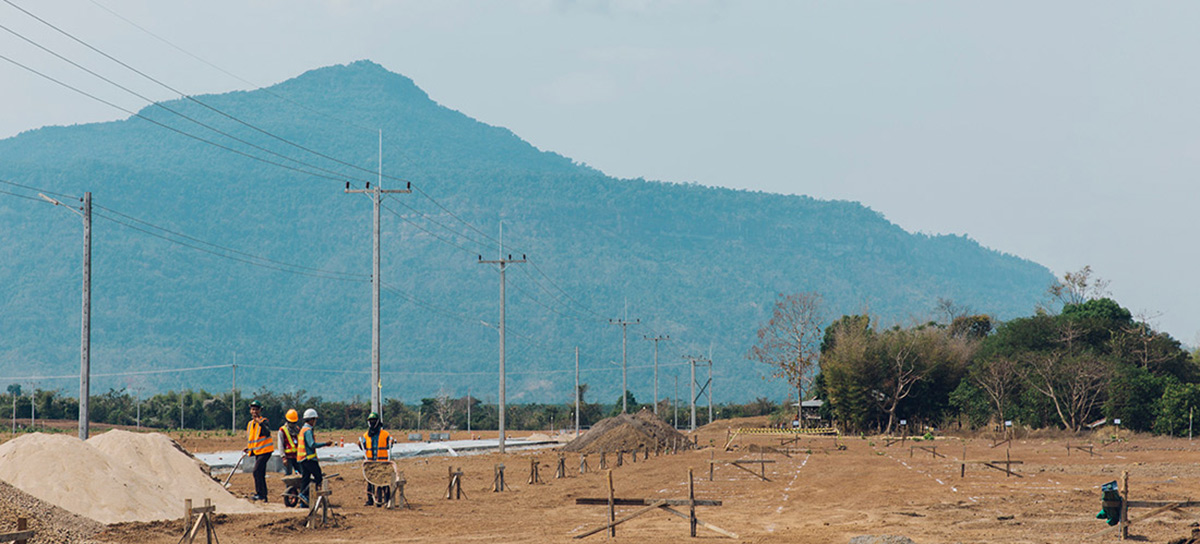
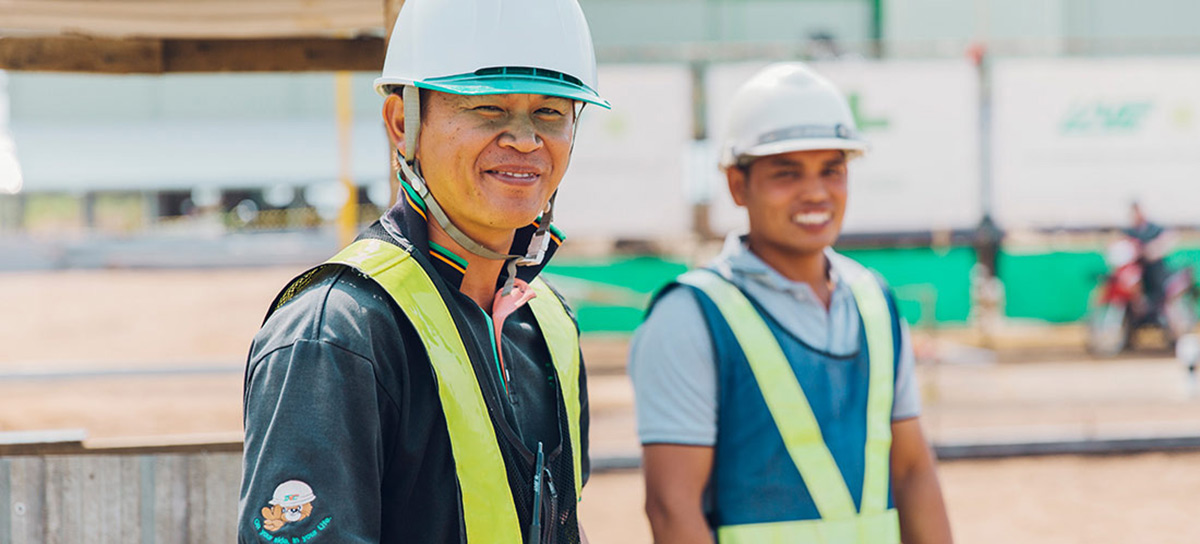
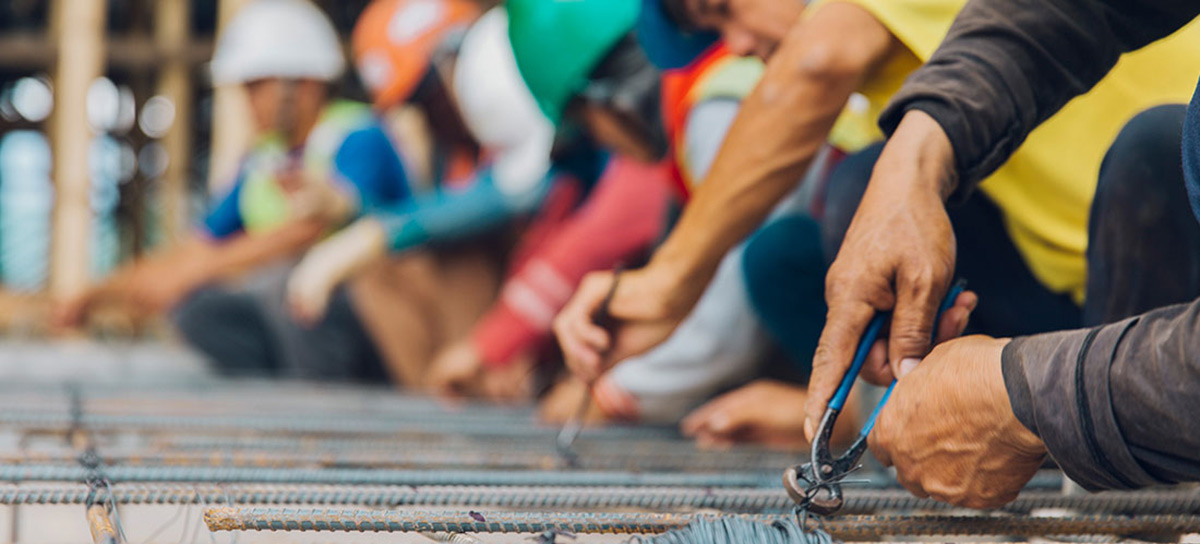
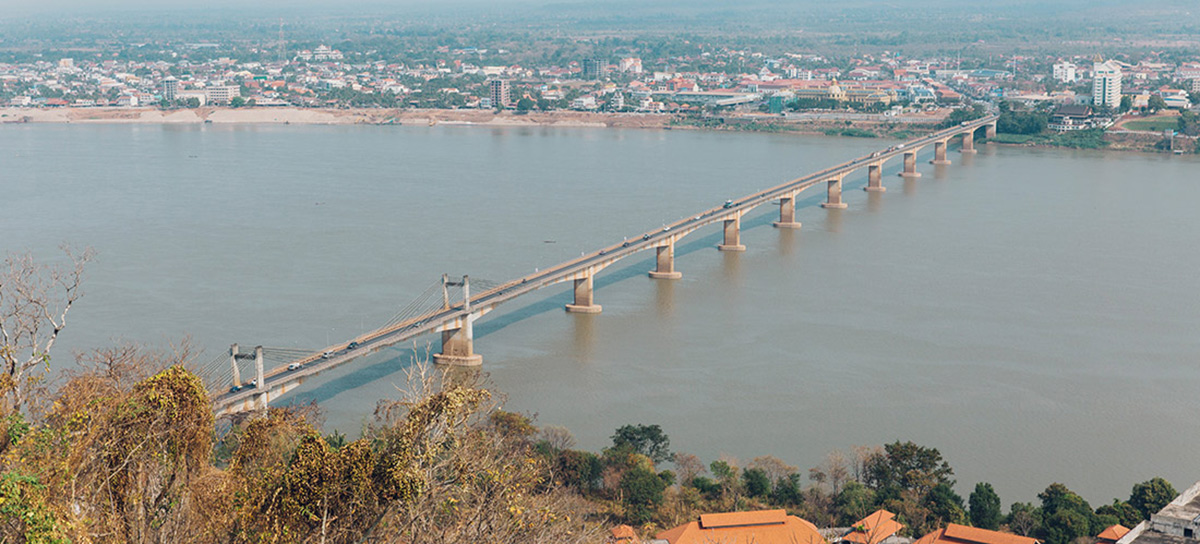
People in Laos are also hopeful about this industrial zone. A government officer in charge of the special economic zone said, “It allows us to deepen friendly relations between Laos and Japan. We would like to develop Laos by introducing the advanced technologies of Japan,” hoping to attract SMEs from Japan. In the local area, industries such as home working trades and farming are dominant. By attracting Japanese companies, the local community intends to create employment and achieve basic capability improvement of its working people, as well as its economic development. While this project is still in the developmental phase, it is expected that Japanese companies will enter the area one after another, leading the special economic zone to grow into a Japanese village. We follow the economic development of Laos. This is another project where the hands-on capabilities of Nishimatsu are demonstrated.
Official website of the Pakse-Japan SME SEZ: https://pjsez.com/






